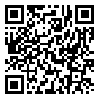Volume 56, Issue 3 (1 1998)
Tehran Univ Med J 1998, 56(3): 78-85 |
Back to browse issues page
Download citation:
BibTeX | RIS | EndNote | Medlars | ProCite | Reference Manager | RefWorks
Send citation to:



BibTeX | RIS | EndNote | Medlars | ProCite | Reference Manager | RefWorks
Send citation to:
Moshkani Z. An empirical test of combined theory of juvenile delinquency. Tehran Univ Med J 1998; 56 (3) :78-85
URL: http://tumj.tums.ac.ir/article-1-1564-en.html
URL: http://tumj.tums.ac.ir/article-1-1564-en.html
Abstract: (7119 Views)
Juvenile delinquency is a social problem disturbing families, social institutions and government agencies. Delinquent juveniles lose valuable opportunities concerning their education and occupation. This paper, has undertaken a field research on the causes of delinquency among juveniles arrested in the greater Tehran. The theoretical framework was established by combining the social control theory of Hirschi and the differential association theory of Sutherland and Cressy. The resultant theory made it possible to take account of both internal and external forces leading to delinquency. From 140 boys and 15 girls of under 18 arrested in 1992 in the greater Tehran, ninety boys and all girls were randomly chosen for interview. Four variables showing delinqueint acts and 81 independent variables concerning their personal characteristics, living environment and migrations, family support, beliefs and practices, association with criminals and pass-time activities and hobbies were measured. A factor analysis were applied to reduce the size of data matrix. Thus, one factor was found as a response variable representing the intensity of youth's delinquency. The independent variables were reduced to 28 factors. A multiple regression analysis showed that only 3 factors were enough to explain the intensity of delinquency. Those factors are the "attachment", "beliefs and attitudes" and "association with criminals"
| Rights and permissions | |
 |
This work is licensed under a Creative Commons Attribution-NonCommercial 4.0 International License. |





